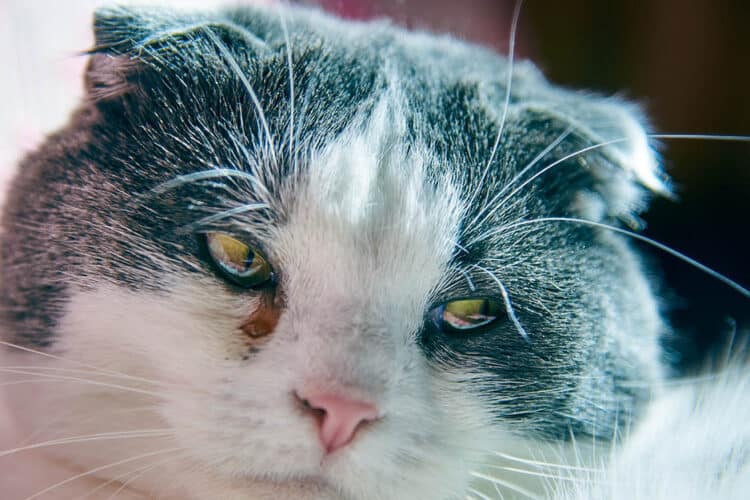Cats’ eyes can be quite beautiful, especially when they are lit up with a love of life. Make-up artists often use cats’ eyes as inspiration to create some of the most gorgeous cosmetic looks ever seen. We are used to associating cats’ eyes with elegance and style—and maybe that’s why there’s nothing quite as unsightly as a cat with crusty, dirty eyes.
Often the culprit behind the grossness is something as simple as eye boogers. But what is it about these little balls of mucus that causes cats to produce them in such great quantities? And what is the very best way to get rid of them? Read on to learn the simplest and safest ways to de-gunk your kitty’s peepers and have their eyes looking stunning again in no time.
Before You Begin
If your cat has discharge coming from its eyes, it is important to rule out a serious health issue. The discharge could be a sign of an infection, which can be serious if left untreated. Other possible causes of eye discharge in cats include allergies, tumors, and a dry eye condition. If your cat’s eyes are swollen or red, or if they are having difficulty seeing, it is important to take them to the veterinarian for diagnosis and treatment.
In the event that your cat does not require a prescription, your vet may OK you to clean their eyes at home. You’ll have to gather your supplies and steel your nerves because many cats don’t take kindly to having their eyes cleaned.

What You’ll Need
- Room-temperature sterilized water and cotton balls or a clean cotton washcloth
- Eyewash pads
- Pet-friendly eye rinse
- Eye ointment
1. Clean Hands & Equipment
Before you touch your cat’s eyes, wash your hands thoroughly with soap and water. Make sure the water is sterilized, and you use clean towels or cotton balls. You can sterilize tap water by boiling it to kill any microbes and then allowing it to cool completely. Ensure that you use fresh supplies for each eye so that you do not spread dirt and germs between them.
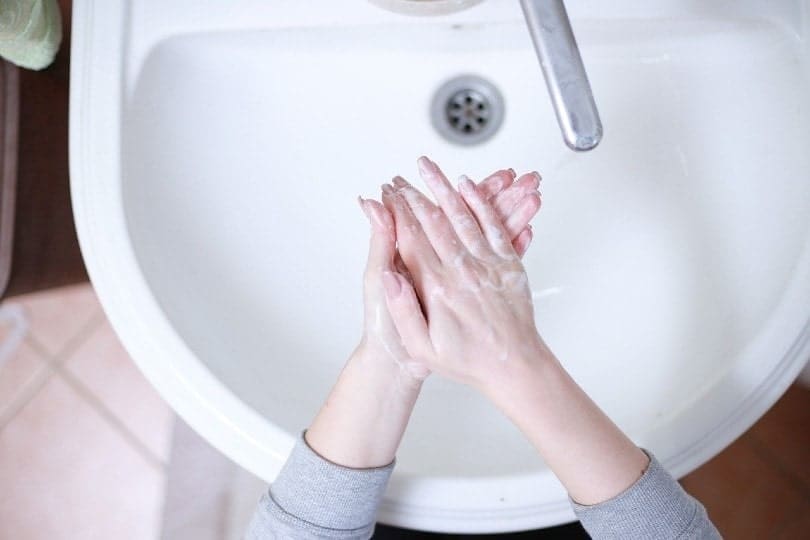
2. Remove Debris
For this step, you can either use a cotton ball or an eyewash pad. If using a cotton ball, dip it in the sterile water and saturate it. If you’re using an eyewash pad, such as Miracle Care Sterile Eye Wash Pads for Dogs & Cats, there’s no need to wet it. Gently wipe the wet cotton ball or wipe over the eye discharge. You may have to make one or two passes, very gently, to loosen and remove the goo.
3. Work Inside to Outside
To remove dirt, debris, and discharge more effectively, start at the inner corner of your kitty’s eye and work your way out. This motion goes with the grain of your cat’s fur and therefore follows the pattern of the discharge. Working against the grain of fur might cause your cat more discomfort.
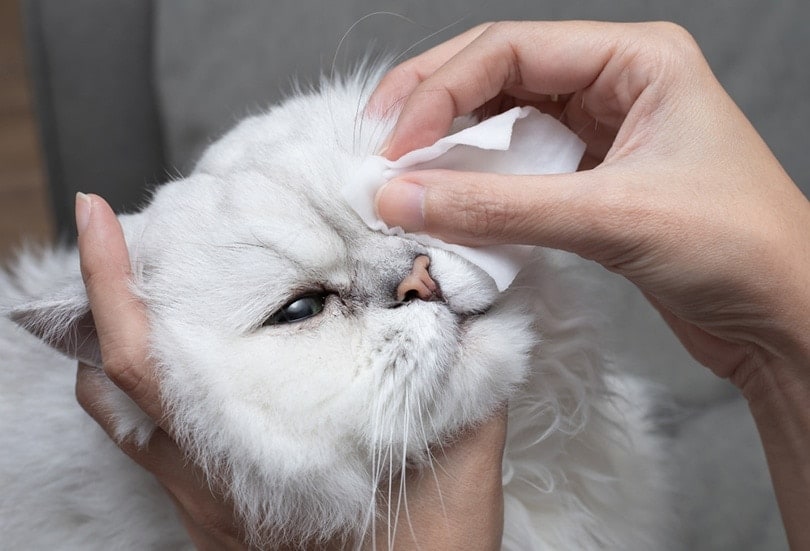
4. Flush Eyes With Rinse (Optional)
Using a specially formulated eyewash or rinse, gently flush your pet’s eyes with a rinse, such as Vetericyn Plus Eye Wash for Pets. Eye rinses can help to take down redness, inflammation, and discharge, if used regularly. Your cat probably won’t enjoy having liquid squirted in their eye, but hold on firmly and calmly.
5. Follow Up With an Eye Gel (Optional)
To give your furry companion’s eyes an extra treat, administer a few drops of lubricating eye gel. A product such as Optixcare Dog & Cat Eye Lube Plus Lubricating Gel provides artificial tears to further moisturize and soothe irritated, dry, or infected eyes.
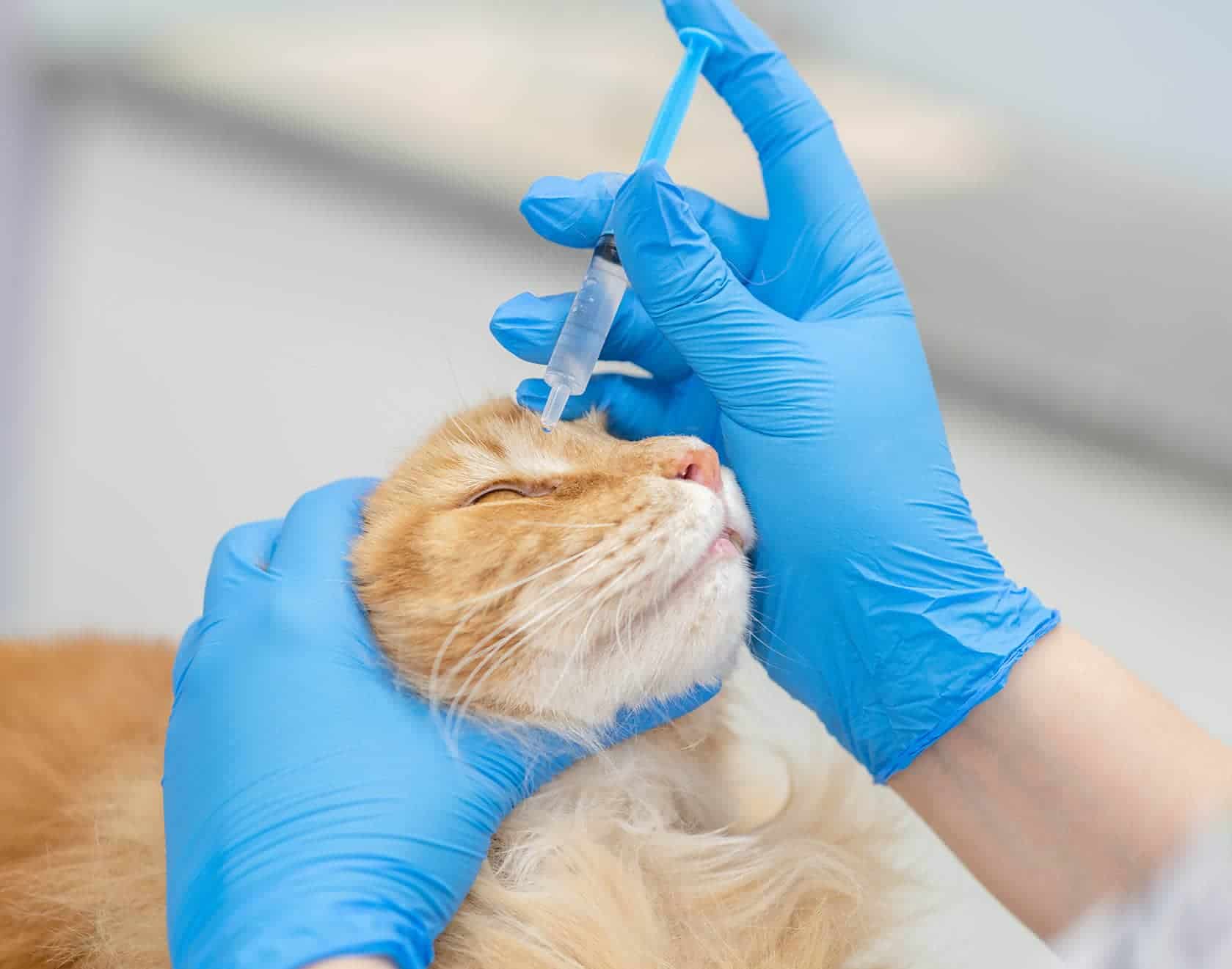
6. Wash, Rinse, Repeat
Maintaining a regular cleaning routine will keep bacteria from building up in your cat’s eyes. As a result, your beloved pet is kept happy and healthy. Cats won’t like it, but you’re sure to think it’s worth it once their eyes are bright, comfortable, and pain-free.
What Causes Eye Boogers in Cats?
Cat eye discharge can be caused by a number of factors, including:
- Feline upper respiratory infections: Eye discharge in cats is often a symptom of a feline upper respiratory infection. This type of infection can be caused by a variety of viruses and can lead to a number of symptoms including sneezing, coughing, and eye discharge.
- Conjunctivitis (pink eye): Conjunctivitis, also known as pink eye, is a common eye infection in cats. It is caused by a bacterial or viral infection and results in a discharge from the eyes. The discharge can be thick and yellowish, or thin and watery.
- Corneal disorders: Cats that have corneal disorders may have a discharge coming from their eyes. This discharge is usually a result of the cat’s eye not being able to produce enough tears, which can cause the cornea to become dry and irritated. The discharge may be thick and yellowish in color, and it may cause the eyes to become inflamed and swollen. If left untreated, a corneal disorder can lead to blindness in the cat.
- Epiphora: This is the overflow of tears from the eyes. It can be caused by a number of factors, such as allergies, conformation abnormalities, or a foreign body in the eye. Symptoms include watery eyes and a feeling of heaviness in the eyelids. Treatment depends on the underlying cause. Cats with eye problems may paw at their eyes, squint, or blink excessively.
- Uveitis: Eye discharge in cats is often a sign of uveitis, an inflammation of the uveal tract. The uvea is a layer of the eye that contains the iris and the ciliary body. Uveitis can cause a variety of symptoms, including discharge from the eye, changes in the color of the eye, and pain. Uveitis can be caused by a variety of factors, including infection, autoimmune disease, injury, or cancer.
- Dry eye: Dry eye is a condition where the eyes do not produce enough tears, leading to a build-up of mucus and discharge. This can cause the cornea to become inflamed and irritated and can lead to vision problems. Dry eye is commonly seen in cats and can be caused by a variety of factors, including age, illness, or environmental factors.
- Allergies: Another potential reason for eye discharge in cats is an allergic reaction. Allergens, such as pollen, can cause inflammation and irritation of the conjunctiva, the thin membrane that lines the inside of the eyelid and covers the white part of the eye. This can lead to the production of excessive tears, which may then drip from the eye.
- Obstruction: If the discharge is caused by an obstruction, it is likely that the cat will also be experiencing pain and inflammation. In some cases, the obstruction may be easy to see, such as a foreign body like grass seed. However, in other cases, the obstruction may be hidden and more difficult to diagnose.
- Problems with the third eyelid: Cats with a problem involving their third eyelid will often have a discharge coming from their eyes. This discharge is usually caused by the inflammation of the tissues in the area and can be a sign that something is wrong. If your cat has a lot of discharge coming from their eyes, it’s important to take them to the veterinarian to get them checked out.
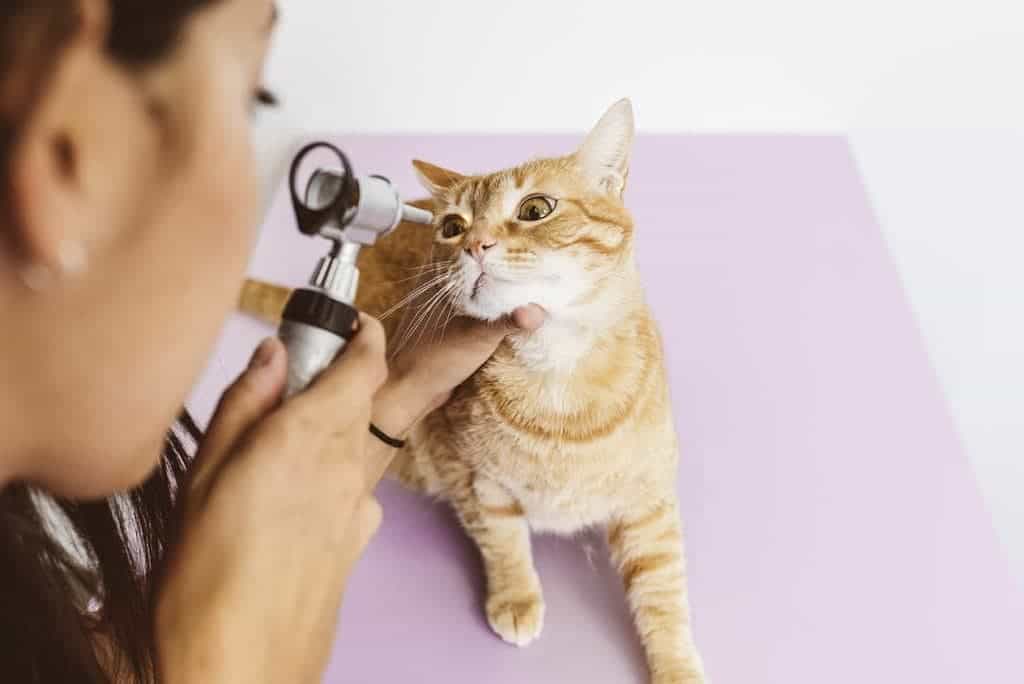
Conclusion
In conclusion, cat eye boogers are a normal part of a cat’s life and should not be cause for alarm. While they may be unsightly, they are usually harmless and can be cleaned up with a little bit of patience and a few simple supplies. By following the steps outlined in this article, you how to clean cat eyes quickly and easily, and help your furry companion stay healthy and comfortable.
Featured Image Credit: osobystist, Shutterstock


